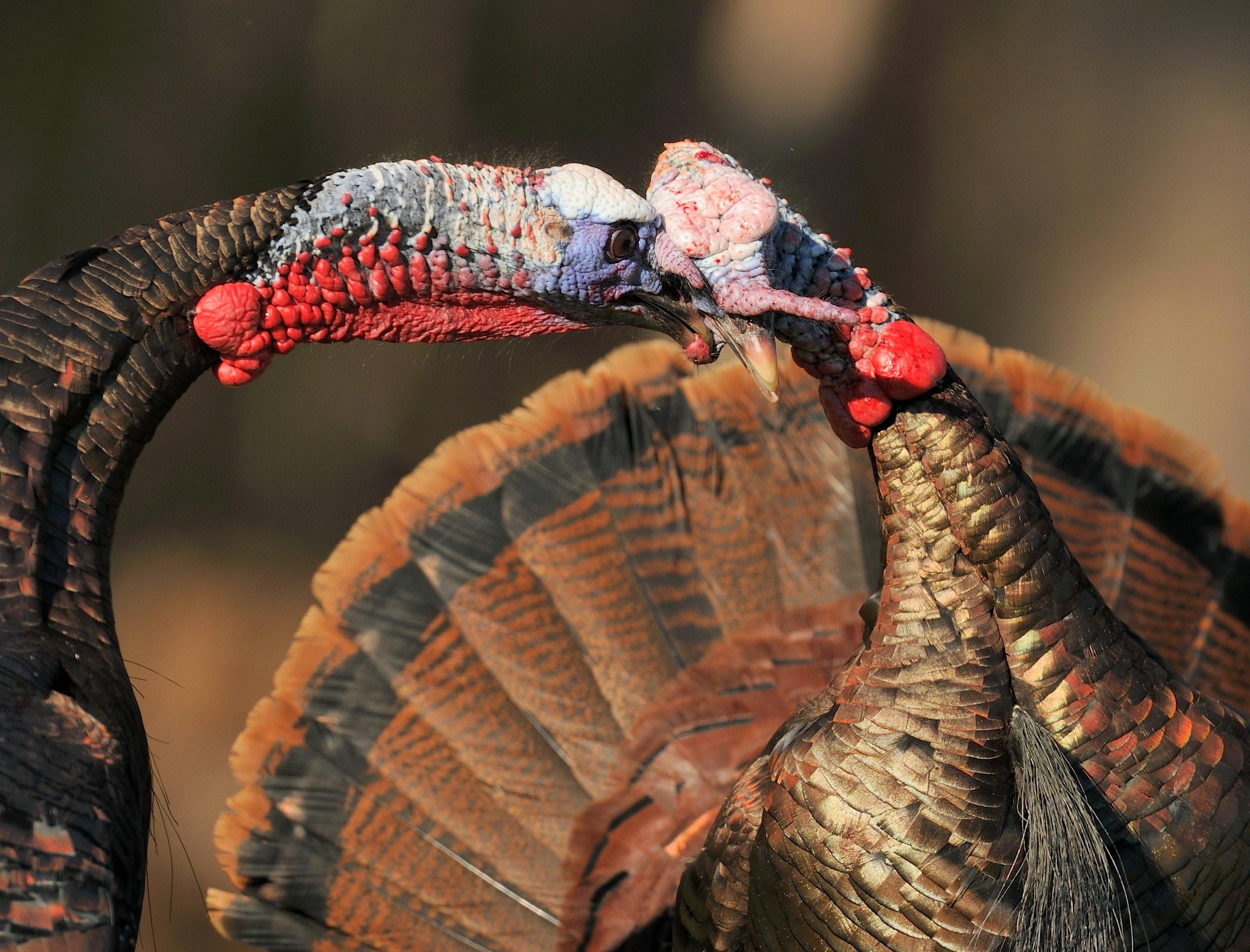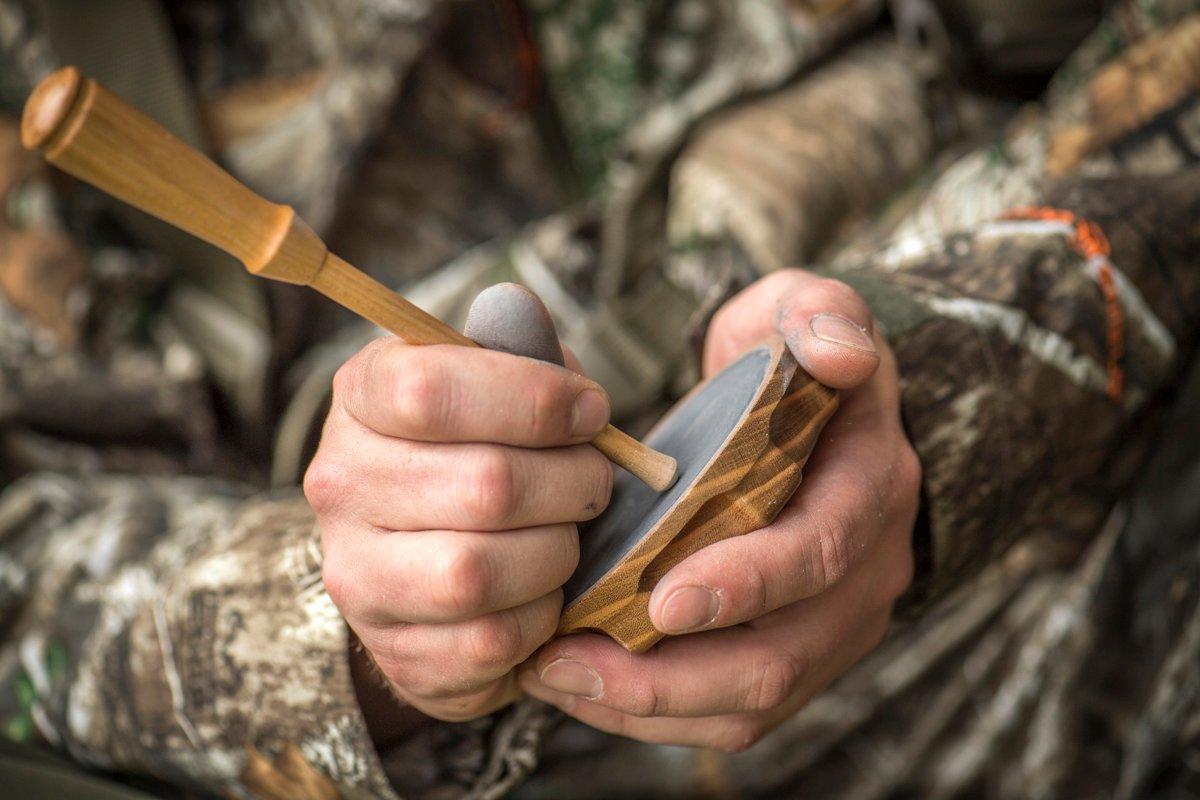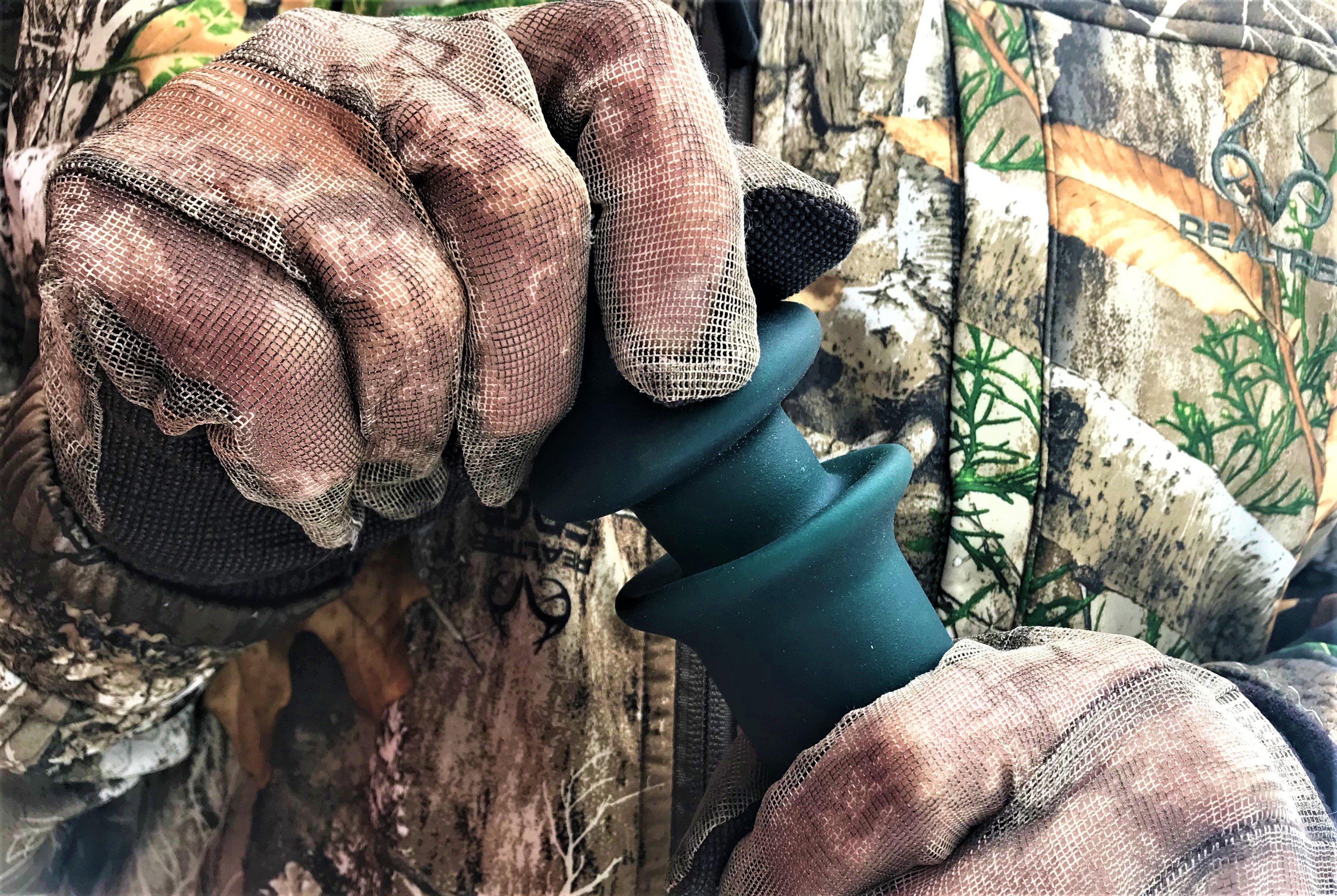Use these calls to pull fired-up autumn longbeards into range
Are you stuck in a rut making kee-kees and kee-kee runs to call in young turkeys of the year? Try reaching out to autumn gobblers with fighting purrs and other bad-boy tactics.
Title Bout
The hunt involved three guys, a turkey dog, and a gang of fall longbeards. A friend had the birds, which he'd seen while bowhunting. I had the dog. Our other buddy had a tag to fill.
Deep in the Vermont woods, my white renegade English setter cast back and forth. Then suddenly, we heard alarm putting and heavy wingbeats in the air. The gobblers were scattered. Game on.
Maybe 20 minutes later, the first turkey returned to the flush site and our calling. After seeing no live birds (and no decoys), it skirted the setup and moved on. Done? Not hardly.
The second fall tom, glowing in the afternoon sun, slipped in shortly after that — footsteps crunching on fallen leaves as if somebody were pounding a bag of potato chips. Beard flopping, he slowed, and minced steps into range. Several deep gobbler clucks and some rising fighting purrs emanated from our well-hidden setup.
Like a hunch-shouldered Count Dracula, the autumn longbeard began to stalk the sounds. His brick-red head flashed red, white, and blue. In he came, fired up. He stopped, clucked … and that's when our buddy filled his tag.
Fighting Purr-fection
Pecking order, and gobblers' desire to hold their rank, is alive and well in autumn, same as spring. You've surely seen longbeards take on a jake or tom decoy in the spring, right? Decoy or not, gobblers are often primed for a fight. Sometimes they watch; other times they run in to be part of it.
The fighting purr is the go-to call to make things happen. Just as a crowd gathers for a bar fight to see what's happening, gobblers sometimes investigate vocalizations that indicate scrapping turkeys. Aggressive fighting purrs can interest toms and jakes into approaching your position. Hens, too.
"Gobblers will sometimes sound off as they approach, gobbling and yelping on their way in."
So how do you make this call? Pot-and-peg calls make super fighting purrs, as do box and push-pin options. To do it, press your striker's tip to the pot's slate, glass, or other surface. Draw and drag lines across the calling surface, never lifting the peg. Vary the note length: purrrrrr, purr, purr, purrrrrrrrrrrr. Add intermittent gobbler yelps and agitated clucks. Express some irritation in your calling. If running a box, drag the paddle against the call's side boards to imitate this. Stroke your push-pin the same way. Even mouth calls can make effective purrs (use raspy, coarse options; avoid high-pitched diaphragms).
Gobblers will sometimes sound off as they approach, gobbling and yelping on their way in. Make it sound like a fight. Scratch the leaves. Hold the lid of your cap, and smack it against a tree or your leg to imitate wings colliding. And get ready: a bright, bobbing gobbler head or two might be dialing in on you.
Gobble at Them
In fall, male turkeys gobble to locate each other and when they get excited. They'll sometimes gobble on the roost. They'll gobble when regrouping after a flock break. If they're fall jakes, they'll tag on a little developing gobble after a kee-kee run. They aren't rounding up hens, but the noise is just as exciting as a spring hunt. You can count me in.
Using a gobble call sparingly can add that little extra to pull a fall longbeard to your setup. Run it when you have a gang of male turkeys roosted out of sight but within earshot, before and right after fly-down. Maybe run that gobbler tube once or twice when they're gathering on the ground, and throw in those fighting purrs. There's often a brief window of time when birds are primed to check out your morning calling, and this is it.
How do you use one? There are several options:
- Grip the barrel of the gobble call as if throwing a forkball in a baseball game, with your index and middle finger wrapped around it and your thumb holding the call in place. Swing your wrist forward and back to produce gobbling.
- Another way, and following the baseball analogy, is to simply grip the barrel as if holding a baseball bat. Swing the call back and forth now as if you're about to roll the dice.
- You can also pump the call quickly (see photo), especially when gobbling after a kee-kee run. Hold the barrel in one hand and move the weighted bellow up and down in a clean motion with the other.
Musical jam session? Nah. This calling strategy should be realistic, and perfectly choreographed with just the right dose of heavy silence. As with making fighting purrs in the autumn turkey woods, be ready for action. Count Dracula may be watching you. And when that fall gobbler slips into range, shoot straight.
[Cool Photos of Fighting Wild Turkey Gobblers]
More Realtree turkey hunting.










